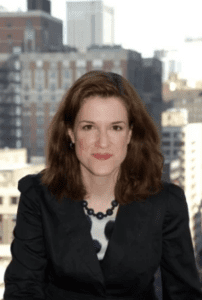Campaign Success Series Part 4: How to Combat the Public Phase Blues
By Erin Lynch Moran, Partner at The Solas Group
This is part 4 of a five-part Campaign Success Series. Read the previous post “The Kickoff“.
Every campaign public phase lasts the same amount of time: 100 years. Of course, this isn’t literally true, but it definitely feels true whenever you are in the midst of a public phase. More than any other time in the campaign, the public phase is when you risk burnout and fatigue among staff members, volunteers, and even the donors themselves. And by some cruel twist of fate, combatting that fatigue generally falls to the single person who is the most tired and burned out of all: the campaign director.
Naturally, you can’t begin to address campaign burnout until you can recognize when you’re experiencing it. Here are some things to look for:
- There is a high rate of turnover on the fundraising team.
- Volunteers are less engaged and begin to taper off their involvement.
- You begin fielding requests to raise money for initiatives that aren’t among the campaign’s priorities.
- There are downturns in fundraising activity, giving participation, or both.
If these sound familiar, here are some strategies for beginning to breathe life into your campaign again:
Reconnect with your mission
Campaigns can make us so focused on fundraising goals that it’s easy to lose touch with why we are raising money in the first place. When you’re in the middle of a campaign, it can be surprisingly easy to forget that your primary objective is not to raise money. Rather, your objective is to support the mission your organization is raising money for. If it’s been a while since you and your colleagues had direct contact with the people who are served by your mission, you may want to consider creative ways of initiating that contact. You can do it in a way that’s formal, such as inviting a physician to your development team meeting so you can hear firsthand about how fundraising has improved patient outcomes. Or you can do it more informally, such as eating in the student cafeteria and tuning in to the mixture of studious and joyful people that surround you. Whatever you do, make a point of reflecting on the good work your organization does and how you can share that positive story with your donors and volunteers.
Hold a mid-campaign retreat
Campaigns last so long these days it’s inevitable that at some point your fundraising strategies will need to be refined. When you begin a campaign, you think about your top priorities and who among your most loyal donors might be interested in supporting them. But as time marches on, some donors don’t behave in the ways that we expect. Even happy surprises, such as getting a larger contribution from a donor than you originally planned, invite shifts in your fundraising strategy. The perfect time to pause and regroup is during the very long middle of your campaign when momentum is waning. Armed with a few years of campaign progress, you and your colleagues can analyze the campaign’s fundraising trends and use the insights you gain to develop a strategy that helps you finish the campaign on a high note. For example, if foundation support for a specific fundraising priority is trending lower than you expected, consider strategies for identifying additional prospects who might be able to help you cover the gap. This is a time for the entire team to be candid about what’s working and what isn’t so you can work collectively to overcome your biggest challenges.
Accelerate the “second track”
I like to think about campaigns as having two “tracks.” The first track is the population of lead donors whose contributions will help you leap forward and announce the campaign goal with confidence. These are the prospects you knew you could count on when the campaign started. The second track is the rest of your constituency, including current and potential annual fund donors, some of whom, with proper cultivation, will convert into major donors before the campaign ends. Most campaigns have several significant gifts that came from donors who were not on the radar during the planning phase. So, while a predictive model is a critical part of the planning phase, developing a new model during the middle of the campaign often provides the “shot in the arm” that campaigns need to sustain momentum all the way to the finish line. Yes, my company develops custom predictive models, but I would wholeheartedly encourage you to consider modeling even if we didn’t. An infusion of newly identified prospects can be just the thing to revitalize a campaign that’s losing its verve.
The public phase doldrums are real, and they happen even in the midst of the best campaigns. More than anything, if you see signs that your campaign is losing energy, don’t despair. Instead, try to welcome it as an opportunity to think creatively, bring new donors into the fold, and work to overcome some of your more vexing challenges. Acknowledging that you’re in a lag and working proactively to address it will inspire your teammates to follow your lead. Before you know it, the end of the campaign will be on the horizon. And always remember: the more you do to address momentum when the campaign is losing steam, the easier it will be for you to conclude the campaign with a strong finish.
About the Author: Erin Lynch Moran is a co-founder and partner at The Solas Group, which provides industry-leading modeling and analytics that help organizations plan, manage, and evaluate fundraising campaigns. Erin is a founding member of aasp and has worked in fundraising for 25+ years, including serving as an associate VP of advancement services and as the campaign director for a successful, eight-year comprehensive campaign. You can learn more about Erin and The Solas Group at www.thesolasgroup.com.
Stay Up-to-date on Fundraising News and Resources
